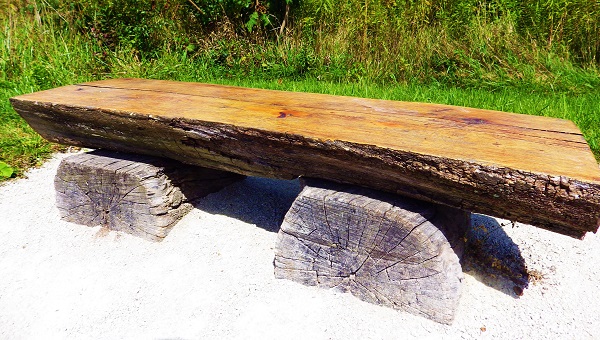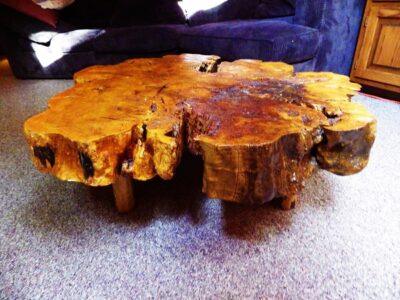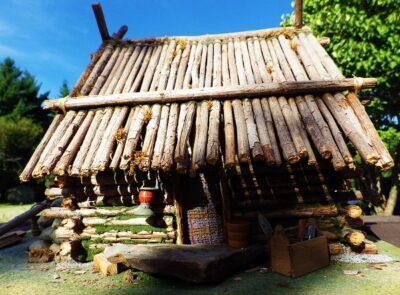|
Listen To The Article
|
On numerous hunting, fishing and camping trips I’ve found myself in a fixed camp with family and friends for up to two weeks. It usually doesn’t take me long to get the ax and a saw out and start to craft various furnishings from the surrounding woods and fallen trees.
What began to occur to me is that some of these improvised pieces actually would look good in my cabin, and on more than one occasion I would bring a piece or two home. Over time I started to see these rustic furnishings as a smart and cost-effective alternative to many of the items I saw in furniture stores.
The critical thing is to start simple and learn as you go. You can also get ideas from stores that specialize in rustic furnishings and catalogs and websites that offer tools and supplies for rustic furniture making.
Start With The Basics
There are a couple of fundamental things to keep in mind when selecting, harvesting and working with woods for rustic furniture making:
(1) Softwood Or Hardwood?
You either can use softwoods like pine, poplar or basswood, or hardwoods like oak and maple. As a general rule, the size of the wood and the hardness are directly proportional to the weight the piece has to support. If you’re making a bed or chair for a big man you’ll want hardwoods with a circumference of at least one to two inches. Smaller pieces like end tables or coat hangers and coffee tables should do fine with softwoods.
(2) Waterproofing
I usually don’t worry too much about water. In a short-term fixed-camp, we’ll usually burn a lot of my improvised furnishings the night before we pack out. If it’s in my cabin it’s protected from the elements and I don’t worry about the elements getting in there.
(3) To Peel The Bark Or Not To Peel The Bark
If I’m chopping together some furnishings for an outdoor fixed camp, I don’t worry about the bark on any tree. If it’s in my home I always peel or strip the bark. All sorts of bugs and slugs like to burrow and crawl around underneath the bark of a tree, and I’d rather not invite them into my home.
(4) Glues, Screws, Nails And Timber Frame Wedges?
I use all four to varying degrees. At times I’ll even use lashings made from rope or rawhide. but they wear out in a year or two. To me, the simple rule is to do what works to make the piece stable and reliable and look attractive as a furniture piece you can enjoy.
Tools Of The Craft
There are all sorts of woodworking tools you can consider for any rustic furniture making. Some are basic and some a bit unique. Here’s the short list:
- Saws, including a chainsaw, handsaw, bucksaw, and any precision saw you might have on hand to make complex cuts.
- Hammers of varying sizes to handle nails of varying sizes.
- An assortment of nails and screws of varying sizes and styles.
- A tape measure.
- Other fastening materials, like carpenter’s glue, rope or rawhide for lashings.
- A drawshave for peeling bark.
- Various screwdrivers for different sizes of screws.
- A hand-held auger or auger in a large drill to bore holes into the underside of tables, benches and for other joints.
- A way to shave and shape the end of a log or stick to fit into the holes you’ve bored. This could be a combination of clever saw cuts or highly specialized and unique drill attachments that literally shave the ends to a perfect taper for a joint.
You could also consider various finishing materials, from sandpaper to varnishes and other finishes, but that’s up to you.
What You Can Make
There really are no limits to what you can make, but we’ll try to keep it simple. Here are a few pieces I’ve put together and some that I plan to make:
(1) Pioneer Bench
This is assuming you have a chainsaw or a large bucksaw and a couple of strong backs. It’s essentially a log cut in half length-wise with a couple of half rounds used to fit into grooves cut into the bottom of the log. I have these all over the trails next to my cabin.
(2) Classic Whole Log Coffee Table
This also takes either a large chainsaw or bucksaw. It’s essentially a slice of a large tree about three inches thick and supported by three legs drilled and joined to the bottom. You could scale this down to make stools or small seats, as well.
(3) My Daughter’s Dollhouse
Hey, why not. This is great practice for rustic furniture building. We built the log cabin dollhouse above together and then built the furnishings from sticks and lumber scraps. She’s now a mother of two and her daughter is now playing and fantasizing about living in this little log cabin.
(4) Beds
This is easier than it sounds, as you have to be sensitive to bed spring and mattress sizes. You also need to support the span of the bed. This is where you might want specialized equipment, like augers and a wedge.
There are also simpler furnishings, such as coat hangers made from a branch extending from a small tree joint to simple benches made from a half-round of a log and supported by four, stout branches driven into the bottom. More complex pieces, like cabinets and dressers, fall more in the category of complex cabinet crafting, but as you experiment and think about it your skills will improve and so will the quality of your rustic furnishings.
Have you ever built rustic furniture? Share your tips in the comments section below:



